
No matter what I’m working on, taking notes has always been a helpful habit. Over the years, I’ve tried scribbling on sticky notes, typing into text files, and even emailing myself reminders.
Eventually, I realised that a good note-taking app makes all the difference, especially on Linux, where we have versatile options. So, after a fair bit of trial and error, I’ve rounded up some of the best note-taking apps that actually work well on a Linux system.
Best Note-Taking Apps for Linux
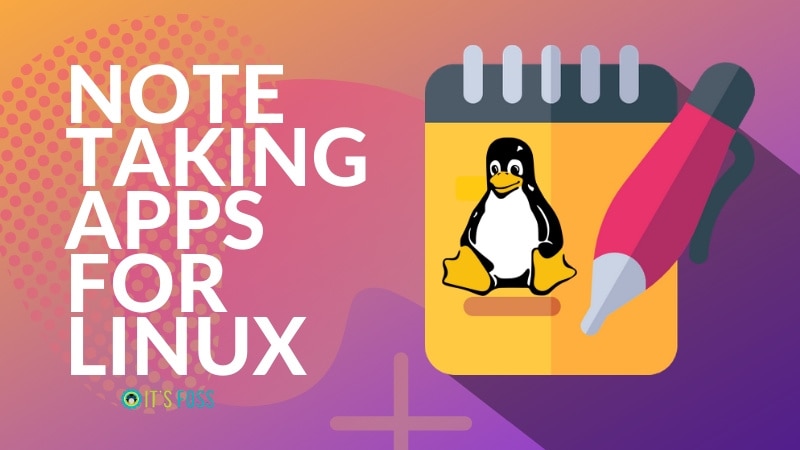
1. Joplin
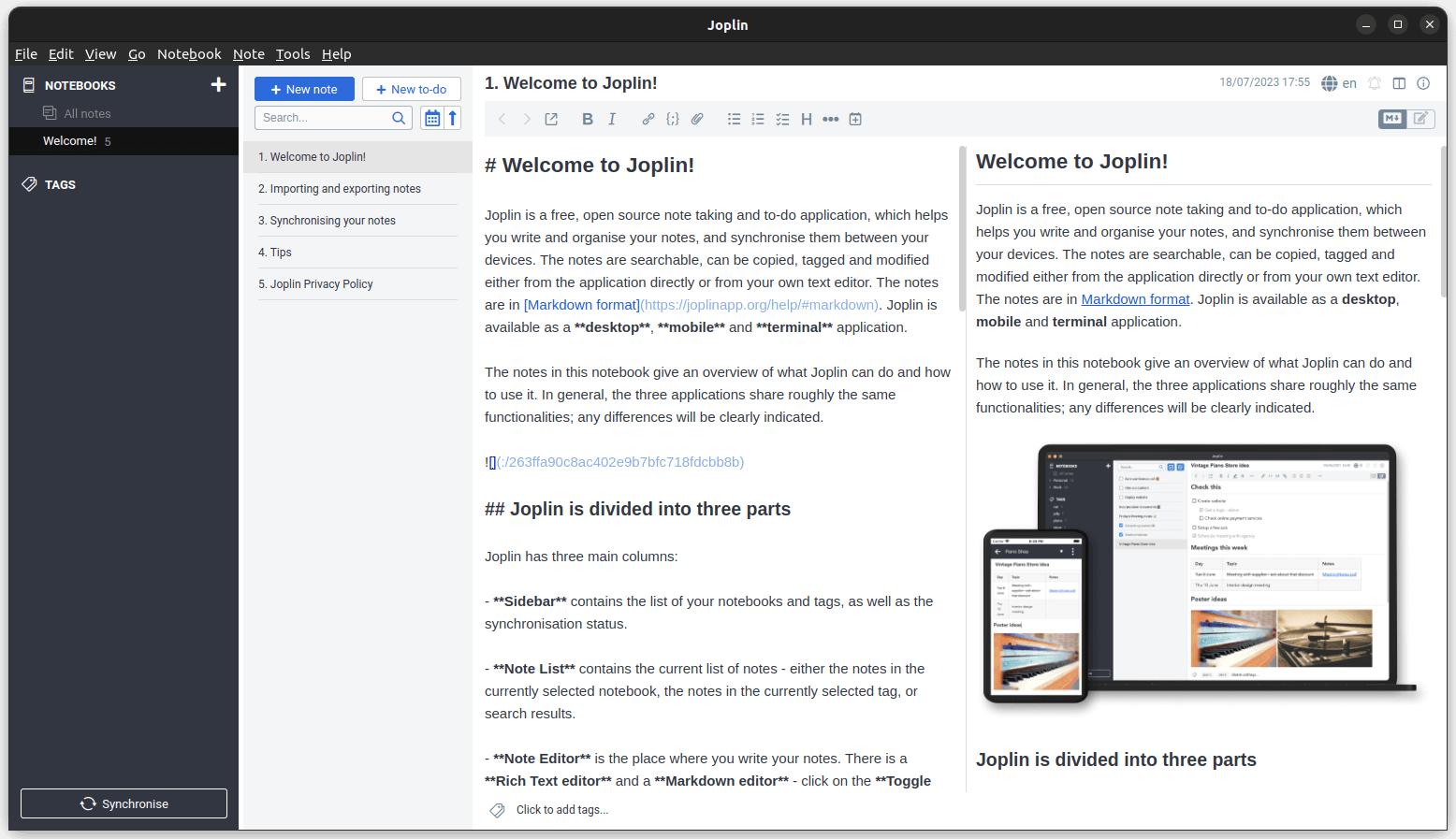
Joplin is an impressive free open-source note-taking app that supports encryption. With the features offered, it’s also one of the best Evernote alternatives out there. In fact, I moved from Evernote to Joplin just because of the features offered.
You can choose to add to-do lists, plain notes, or use it as a markdown editor to write something. It’s available for Linux, Windows, macOS, Android, and iOS.
If you’re curious, you can read our detailed article on Joplin to know more.
✅ Encryption support
✅ Support for attachments
How to install?
You get an AppImage file to install Joplin. I’ve tried it on Ubuntu 22.04 LTS and it works as expected.
To look for the file, you can head to its official website or explore their GitHub page, where you can find different packages.
In case you don’t know how to use the AppImage file, follow our guide on using AppImage files to get started.
2. cherrytree
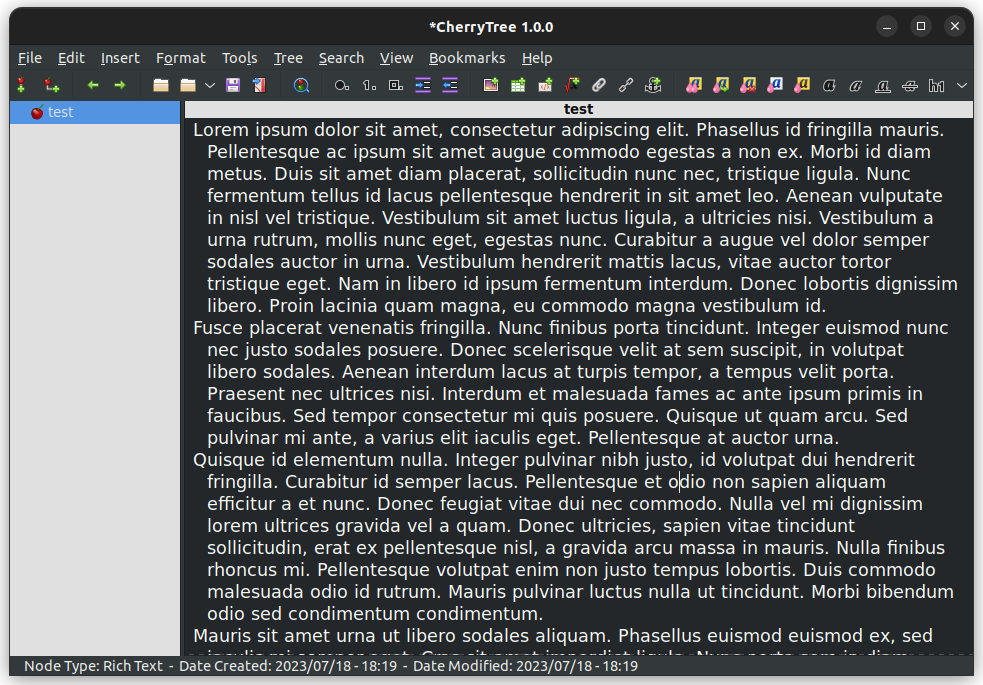
cherrytree is a popular hierarchical note-taking application for power users. If you have many notes to manage or just want to store a variety of text, a hierarchical note-taking application like cherrytree can be the perfect choice.
✅ Rich text support
✅ Cross-platform.
How to install it?
cherrytree should be available through the software center of your Linux distribution, or from the official website.
You can also find .deb/.rpm, Flatpaks, Snap packages, and even the source code on its GitHub repo.
3. Simplenote
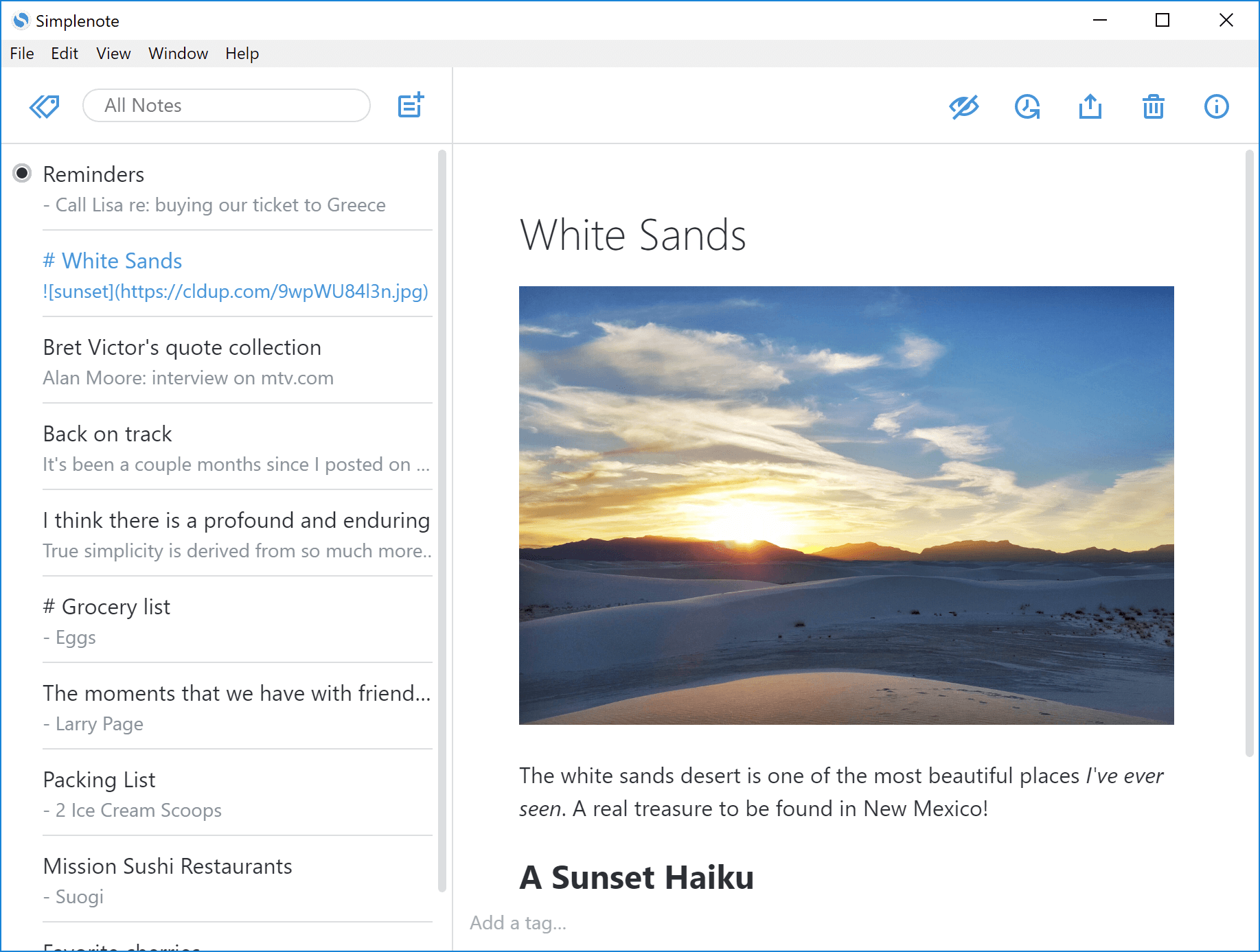
As the name suggests, this is a simple, free and open-source note-taking app.
Developed by Automattic (the company behind WordPress), Simplenote lets you seamlessly sync your notes across multiple devices. It supports Android, iOS, Windows, Linux, and macOS.
Unlike other apps, you will notice that the interface is dead simple and very minimalistic in nature.
✅ Simple user interface.
✅ 32-bit package available.
How to install?
It is offered in many package formats, including .deb, .rpm, AppImage, tar.gz, and more. You can find those in its GitHub repo or the official website.
4. Notesnook
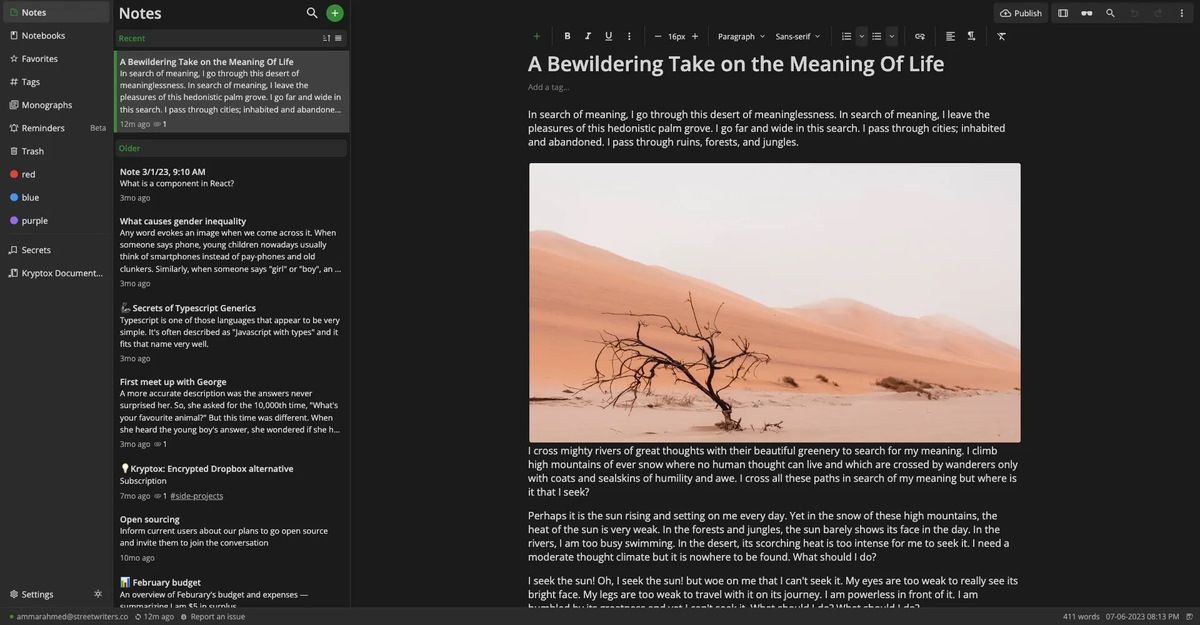
Notesnook is an interesting open-source note-taking app that focuses on privacy while providing a resemblance to the Evernote experience. You get end-to-end encryption by default and a private space for your note data.
We covered it during its early days of launch, and it impressed a bunch of our readers with what it offers. It is available for Windows, macOS, Linux, Android, iOS, and the web.
You can get started for free, and upgrade to its Pro edition for an affordable price (depends on your region).
✅ Web clipper
✅ Anonymous and secure note-sharing
✅ Markdown support
How to install?
You can download its AppImage file for PC or ARM device. If you prefer Flatpak and Snap, you will find both packages available for it, along with some more package manager support.
Head to its download page to get the package you need.
5. Gnote
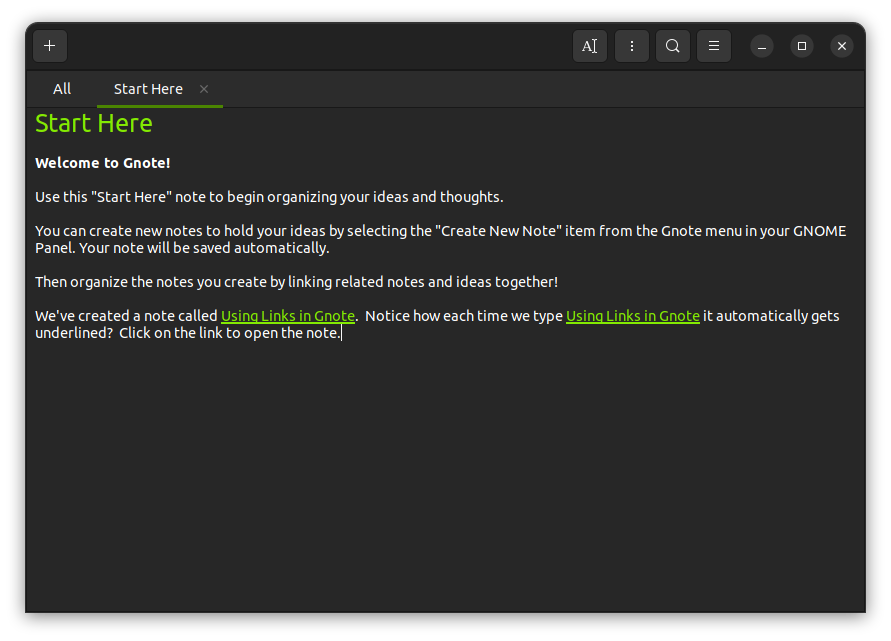
Gnote is a minimal note-taking app that has been tailored for use with GNOME (not limited to). It allows you to link texts together using WikiWiki-style links, grouping them together in notebooks.
✅ Support for sync
✅ Tab support
How to install?
You can get it from the Flathub store, or you can head over to its GitLab repo to build it from source, or get access to alternative packages.
6. Logseq
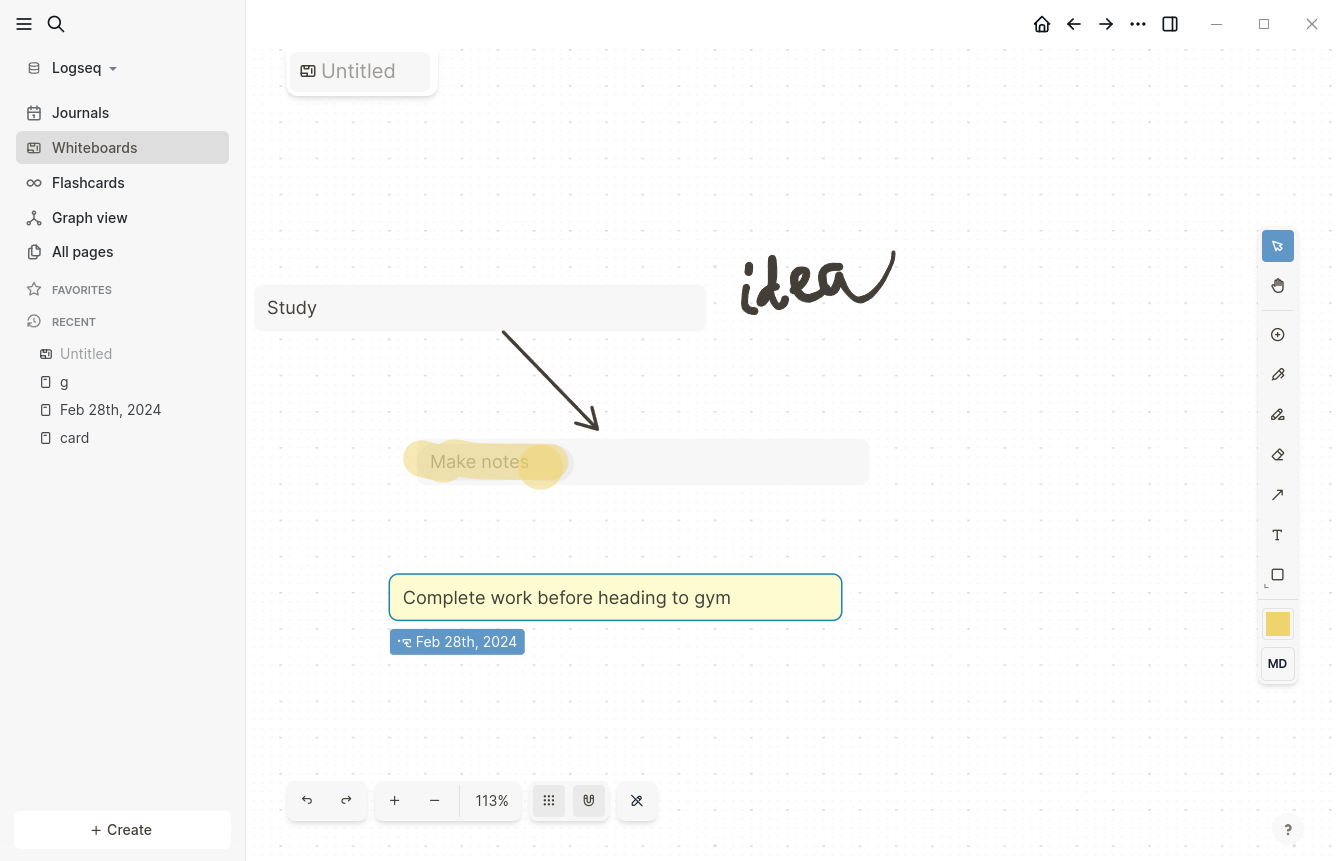
Logseq is a knowledge base focused note-taking app. You can visualize your ideas, and thoughts in a graph or use the whiteboard feature to organize them.
There are various ways to look at your notes, helping you keep track of your thoughts, and get back to them easily.
It presents a learning curve compared to others, but for some, it is well worth it.
✅ Whiteboard
✅ Flashcards
✅ Cross-platform sync
✅ Privacy-focused
How to install it?
It is available for Linux, Windows, macOS, iOS, and Android. For Linux, you can download the AppImage file.
You can refer to our AppImage guide for help.
7. Standard Notes
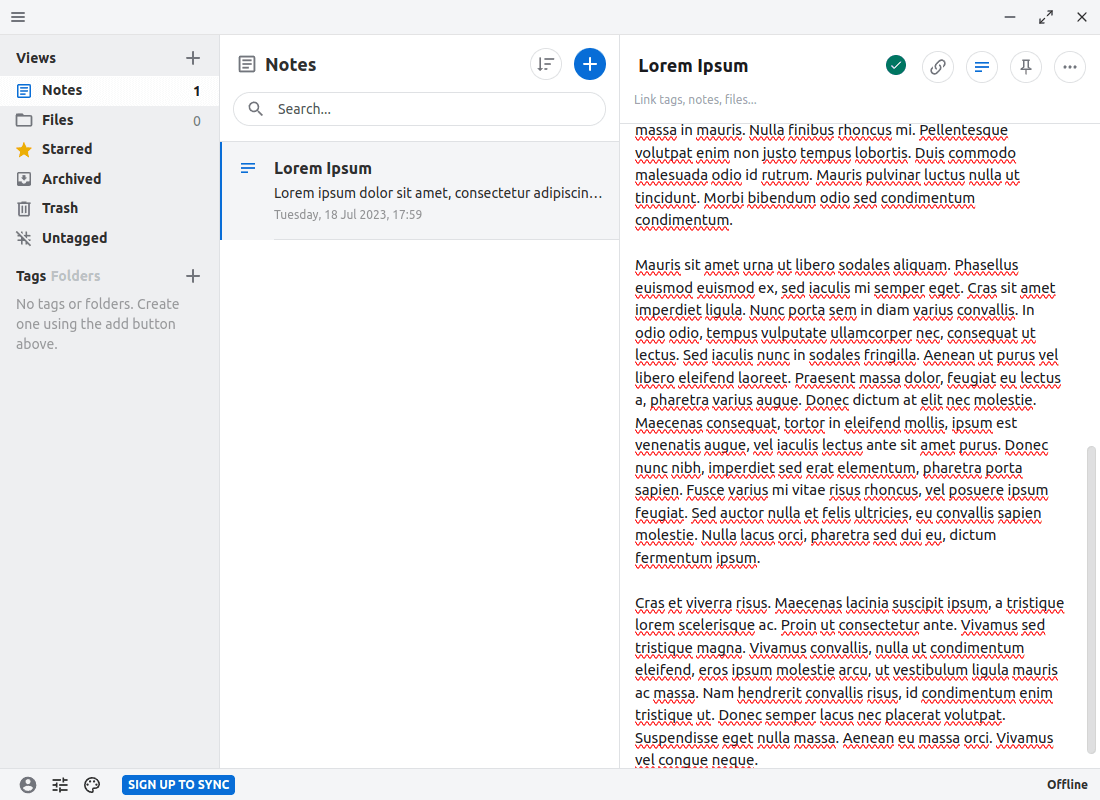
Standard Notes is one of the best options as a note-taking app. While it offers a great deal of features, including end-to-end encryption, some of them are limited to paid subscribers as “extended features” or extensions, which could be on the expensive side (for a monthly subscription) as per your region.
Overall, you get markdown support, the ability to encrypt attachments/notes, version history, backup support (OneDrive, Google Drive, etc.) and more.
You can also refer to our article on Standard Notes to learn more.
✅ Cross-platform, including mobile apps.
✅ Version history of notes (Paid)
✅ End-to-end encryption
✅ Owned by Proton
How to install?
It is offered as an AppImage file as well as a Snap for Linux, you can head over to the official website to get the package of your choice.
For other available packages or source code, you can refer to its GitHub page.
8. Boost Note

Boost Note is a useful note-taking app for programmers using Linux. You can write code, and also use it to write notes, documentation, etc.
It offers a clean and intuitive user interface while offering all the basic features of a note-taking app.
✅ Suitable for developers
✅ Cross-platform
How to install it?
You can opt for the .deb file available on its official website. You can also find other packages if you want to try it on other Linux distributions by heading to its GitHub repo.
9. Tomboy Notes (Next Generation)
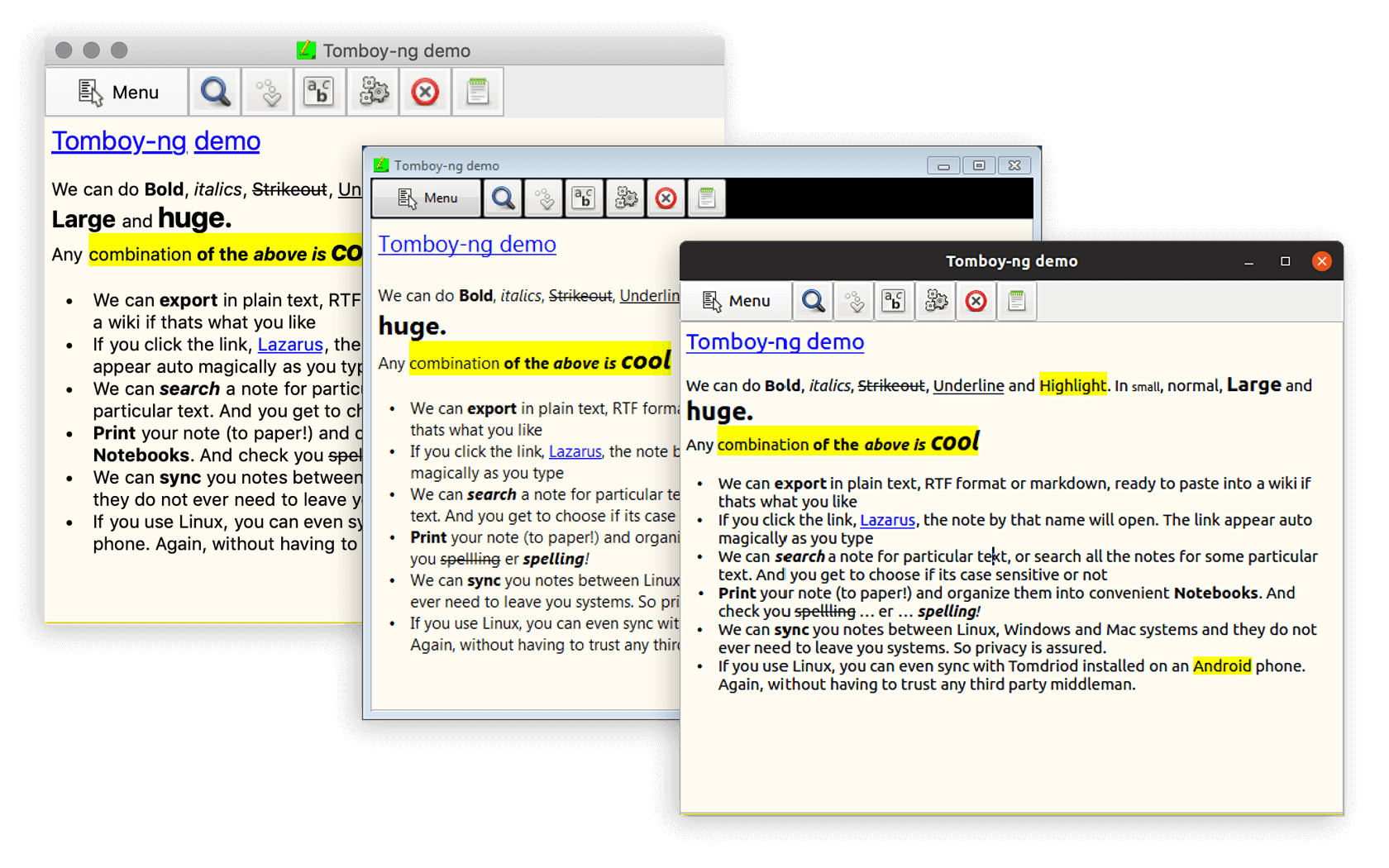
How about a lightweight and simple note-taking app?
Well, you might be aware of the old Tomboy note-taking app, which is no longer developed. Fortunately, there’s a next-generation version of it.
✅ Sync support
✅ Cross-platform
How to install it?
You can find .deb, .rpm, .tgz, and other packages in its GitHub repo, as well as documentation and install instructions.
10. RedNoteBook
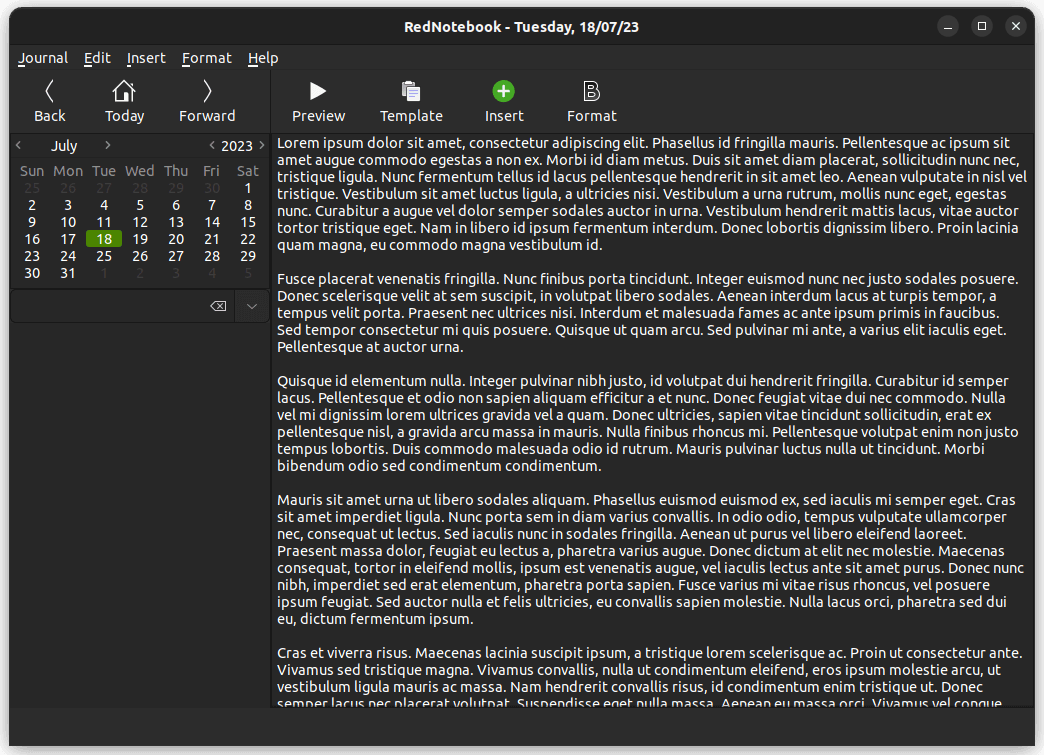
RedNoteBook should be a good choice for users who want an offline note-taking app for their Linux system.
Yes, it does not support online sync and if you’re someone who doesn’t want that, RedNoteBook is the one for you.
It is mostly tailored for users who like to have a journal, and also provides a couple of templates for a quick start.
✅ Many templates available.
✅ It can be used offline.
How to install it?
If you’re using Ubuntu (or any other Ubuntu-based distro), you can install it via PPA. Otherwise, you can grab it from the Flathub store.
For the PPA, here's what you have to type in the terminal to install it:
sudo add-apt-repository ppa:rednotebook/stable
sudo apt-get update
sudo apt-get install rednotebookFor other Linux distributions, you can get different packages from its GitHub repo.
11. TagSpaces
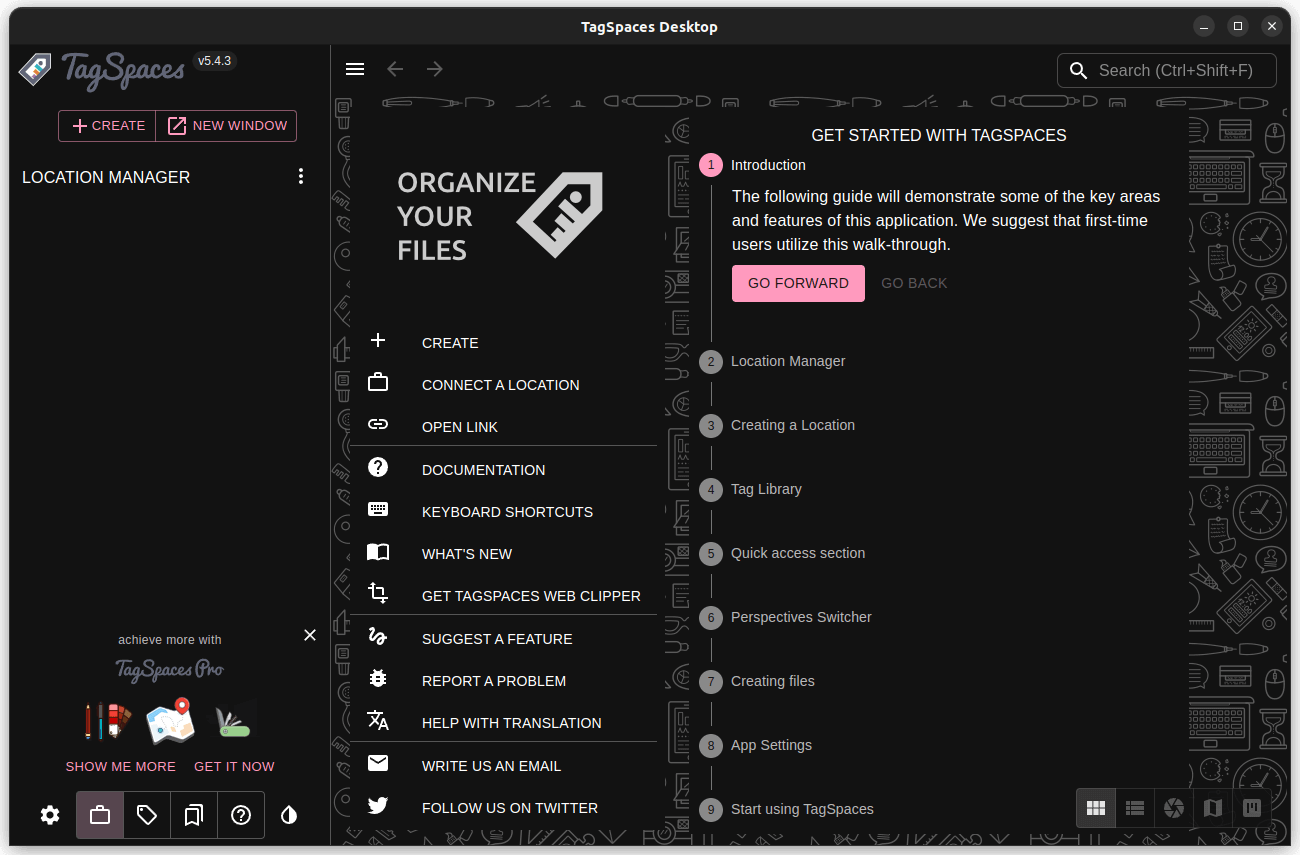
TagSpaces is a beautiful note-taking app that is not just limited to creating notes, but you can manage photos and other documents as well.
Unlike other note-taking apps, it doesn’t offer encryption. So, you can try tools like Syncthing to sync your data safely.
You can also opt for its premium plans if you want special features and support.
✅ Supports managing documents.
✅ Offers premium options.
How to install it?
You can find the AppImage file on the official website. For other packages, or source code, you can visit its GitHub repo.
12. Trilium Notes

Trilium Notes is not just another note-taking app, it’s a hierarchical note-taking application with a focus on building large personal knowledge bases.
Yes, you can use it for common use as well, but it’s tailored for users who want the ability to manage the notes in a hierarchical manner.
✅ Encryption support
✅ Sync support
How to install it?
Simply head over to its GitHub repo or Flathub store page to grab the packages of your choice. It is offered as a .deb, Flatpak, .zip, .tar.xz.
13. Notable
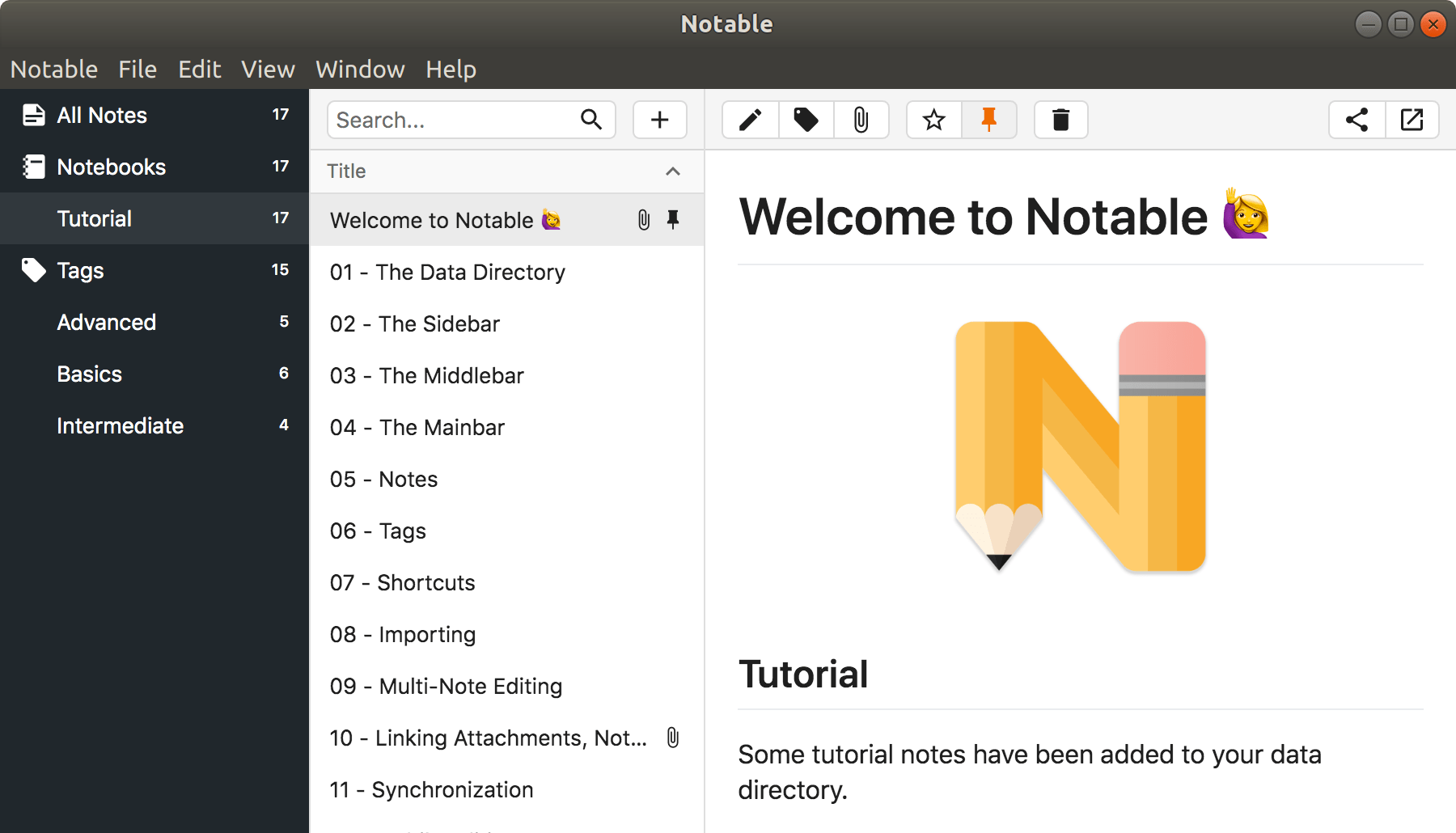
If you are looking for a simple note-taking app with a good UI while also having a GitHub-like Markdown experience, then Notable can be a good pick.
It does not support any specific cloud-storage integration, but it lets you choose a folder to store your notes. Unfortunately, it doesn’t offer encryption for the notes stored in that way.
How to install it?
Notable is offered in a variety of package formats that include, AppImage, .deb, pacman, .rpm, and Snap. Head over to the official website to get it for Linux, Windows, macOS, and iOS.
14. QOwnNotes
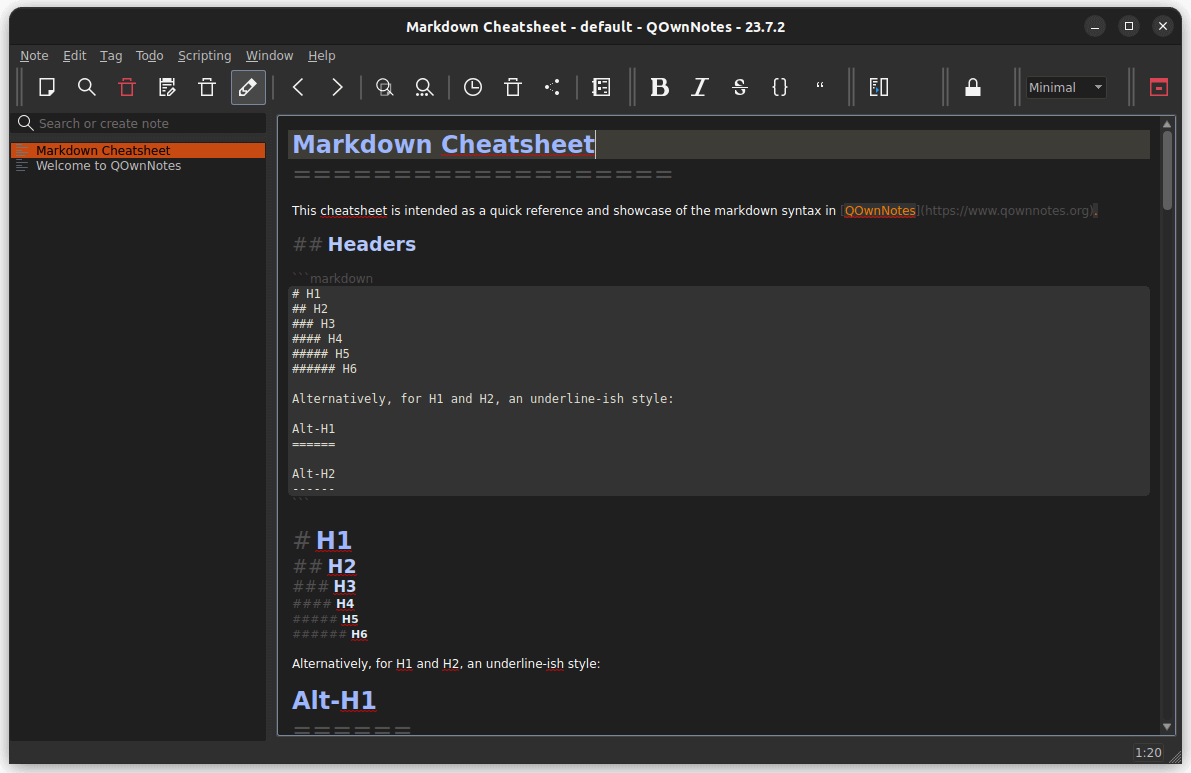
QOwnNotes is yet another open-source note-taking app that supports Markdown. In addition to that, it also provides many advanced options to organize notes easily.
You can also use it as a to-do list app.
Its main highlight is that, it doesn’t rely on any cloud storage service. Instead, it supports Nextcloud / ownCloud integration.
✅ To-do list support
✅ Cross-platform
How to install it?
You can head over to the official website for installation instructions, and to the GitHub repo for the packages.
Suggested Read 📖
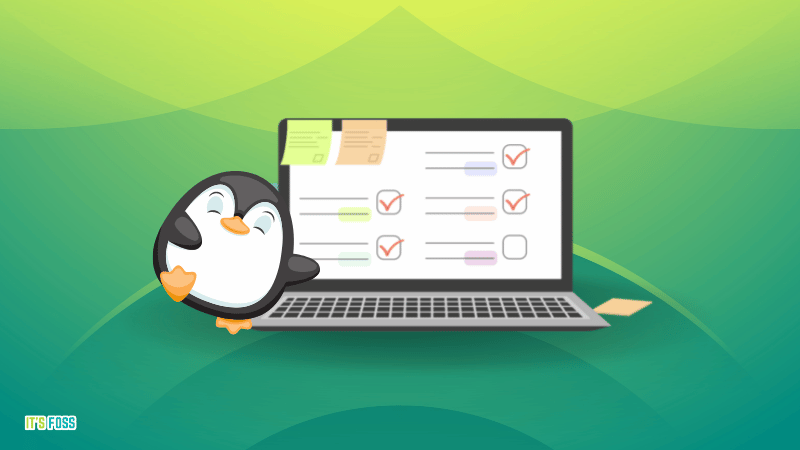
15. Zettlr
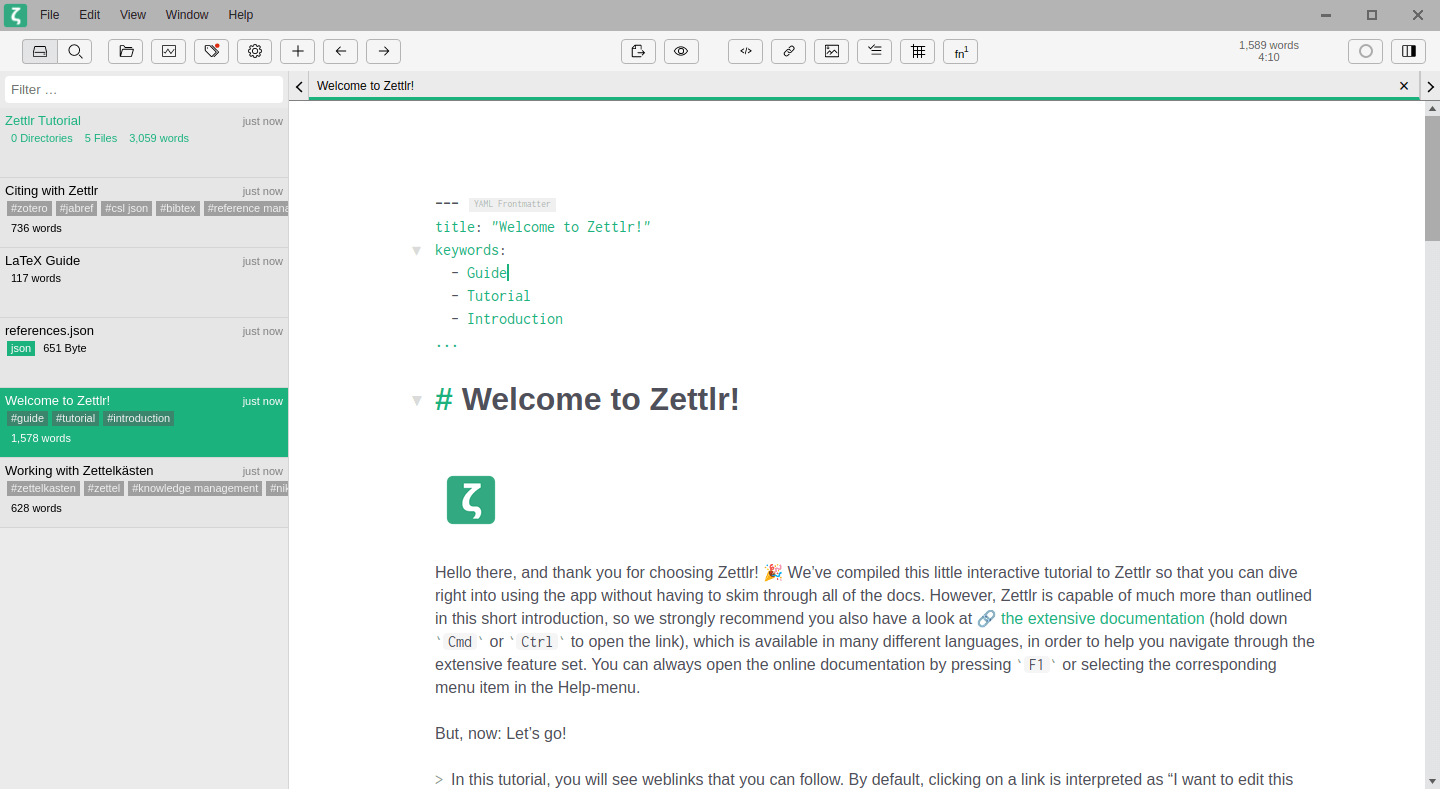
Zettlr is an impressive Markdown editor that can be used as a note-taking application. It features all the essential features found on a note app.
You can choose to store your files offline or sync the note folder with any of your cloud storage services.
Personally, I like the user experience with a focused view of writing and managing things on Zettlr. In fact, we also have an article on Zettlr, if you’d like to get more details.
How to install it?
I tested it using the AppImage file and it worked great. You can head to its official website to download the package you need.
Though, it is also offered in other packaging formats such as .deb, .rpm, .dmg, and more. You can check those out in its GitHub repo.
16. Zim Wiki
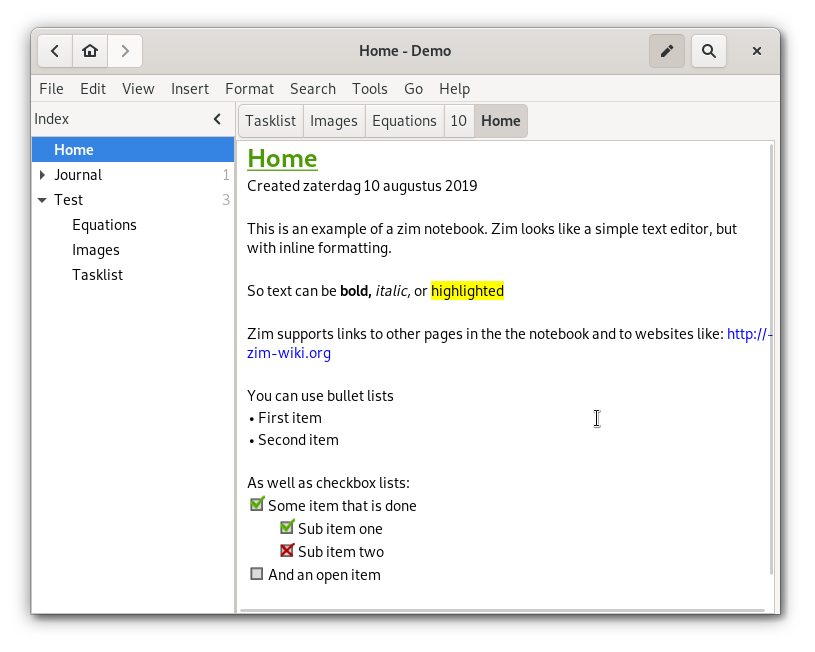
Zim is an interesting note-taking application in the form of a desktop wiki.
You can manage your notes or blog entries in the form of a collection of wiki pages, which is super efficient for many users.
Not just limited to that, but you can export your notes into the HTML format if you need to publish it as a web page.
On some Linux distributions, like Linux Lite, you might find it pre-installed.
✅ Export your notes to HTML to create a webpage.
✅ Support for wiki syntax.
How to install it?
You can easily get it from the software center on your Linux distro. However, you may not find the latest version available.
So, in that case, you can head over to the official website to get started, and if you are interested in the source code for it, you can head over to its GitHub repo.
Wrapping Up
That concludes my recommendations for good note-taking apps on Linux. I have used most of them, and have currently settled with Standard Notes for quick notes and Joplin for collection of notes in chapters.
💬 Do you know of any other notes apps available for Linux that you think should be included in this list? Please let us know in the comments below!
It's FOSS turns 13! 13 years of helping people use Linux ❤️
And we need your help to go on for 13 more years. Support us with a Plus membership and enjoy an ad-free reading experience and get a Linux eBook for free.
To celebrate 13 years of It's FOSS, we have a lifetime membership option with reduced pricing of just $76. This is valid until 25th June only.
If you ever wanted to appreciate our work with Plus membership but didn't like the recurring subscription, this is your chance 😃


